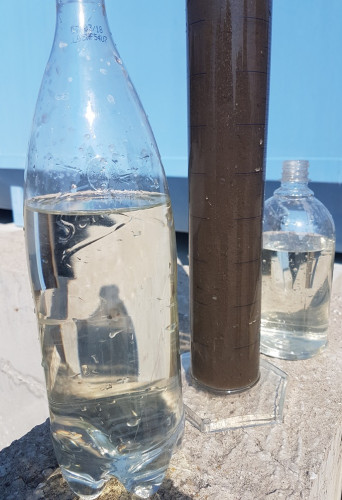
Unlike the convectional activated sludge systems where the quality of the effluent is largely depended on the ability of the active sludge to settle in the MBR reactors the large number of tiny pores that are found on the surface of the membrane ensure product with lower concentration of suspended solids.
This leads to a treated water with low value of BOD5 (Biological oxygen demand for five days at 20`C) and COD (Chemical oxygen demand) measured in mg/lit. In convectional active sludge system the foaming, sludge bulking and pin flocks (small colonies of bacteria) are major problems for operating the plant and obtaining the necessary quality of the treated water.
On the other side the filtration process in the MBR system is not affected by the poor sludge settling properties. The area required for building an MBR plant is several times smaller than convectional activated sludge systems. Further, the modular design of the MBR reactor enables easy upgrade of the capacity of the waste water treatment plant.
The advantages of using an MBR is in high percentage of reducing the pollutants, high effluent quality, small footprint and possibility for treatment of high organic load. The MBR reactors are used in the treatment of waste water from food industry, paper industry and textile industry, where the water might be reused as process water. In the chemical and pharmaceutical industry because of the poor sludge settling properties the MBR is gaining wide usage.